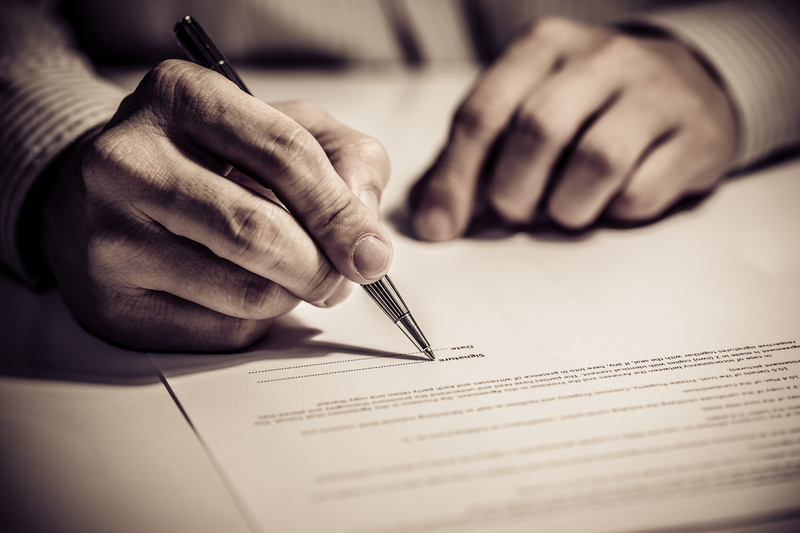Protect Your Instrument: The Case Against DIY Piano Moving
Posted on 07/06/2025
Protect Your Instrument: The Case Against DIY Piano Moving
Your piano is more than just an instrument; it is an investment, a piece of family history, and a delicate work of craftsmanship. When the time comes to relocate, protect your instrument by understanding why DIY piano moving is riskier than you might think.

Understanding the Value and Vulnerability of Your Piano
Pianos are renowned for their majestic appearance and intricate internal mechanisms. Whether you own a grand piano, upright, or digital model, you may not realize that your instrument:
- Weighs anywhere from 300 to over 1,200 pounds.
- Contains thousands of finely tuned parts, many of which are fragile.
- Is susceptible to environmental changes and physical impacts.
- Can suffer costly and irreversible damage from improper handling or movement.
The cost of repairing a dropped, scratched, or structurally damaged piano can exceed several thousand dollars--often more than the cost of hiring professional movers in the first place.
Common Misconceptions About Moving A Piano Yourself
Many people underestimate the complexity of moving a piano. Here are a few widespread myths:
- "With enough people, it's easy." - Pianos are not just heavy; their weight makes for an awkward, top-heavy load that is difficult to balance and maneuver, even with multiple helpers.
- "We just need to be careful." - Even with the utmost caution, lack of expertise in properly disassembling, protecting, and transporting a piano can lead to disaster.
- "We don't have far to go." - Most reported piano-moving accidents occur during short moves--inside the same home or building--when proper tools and techniques are overlooked.
Why Is Piano Moving So Challenging?
Pianos aren't like common household furniture. Their extraordinary weight is compounded by an uneven distribution, fragile legs, and sensitive components, including keys, pedals, and action mechanisms.
The Unique Risks of the DIY Approach
- Potential for Severe Injury: Pianos can cause crushing injuries, shattered fingers, sprained backs, and other serious medical emergencies.
- Physical Damage to Instrument: Even small bumps or drops may crack the soundboard, warp the frame, dislodge internal parts, or break legs and casters.
- Damage to Property: Walls, floors, doorways, and stairs often bear the brunt of a piano mishap, leading to expensive home repairs.
- Risk of Tuning and Intonation Problems: Improper handling easily knocks your piano out of tune and may require skilled technicians to recalibrate its sound.
Professional Piano Movers: What Makes Them Different?
Professional movers have extensive training, specialized equipment, and an in-depth understanding of the mechanics of each piano type. Here's what sets piano moving professionals apart:
1. Specialized Equipment
- Piano Dollies and Skids: Custom-fitted to support the instrument's weight and contours during movement.
- Straps and Padding: Thick, non-abrasive materials protect the finish and internal parts from shocks and scratches.
- Ramps and Hoisting Gear: Allow for safe transport up or down stairs, narrow hallways, or tight corners.
- Climate-Controlled Vehicles: Shield pianos from humidity and temperature fluctuations during transit.
2. Trained Teams
- Experience with Different Piano Types: The process for upright, baby grand, and concert grand pianos varies considerably.
- Advance Assessment: Analysis of each move's specific challenges, including path to entrance/exit, staircases, and terrain.
- Coordination and Communication: Each team member has a defined role, minimizing accidents and confusion during the move.
3. Insurance and Liability Coverage
- Peace of Mind: Should the unexpected happen, licensed movers carry comprehensive insurance for your piano and property.
- No Personal Liability: You're protected from personal injury claims by accidental damage to helpers or passersby.
Piano Moving Risks: Real-Life Examples
"We Thought We Could Handle It"
A family in Boston purchased a vintage grand piano, planning to move it themselves with a few friends. Despite managing to get the instrument out the door, their makeshift ramp collapsed, sending the piano tumbling and shattering its lid. The repairs cost over $8,000, far exceeding the quote from a professional mover.
"The Short Move Disaster"
In another case, a couple tried to move their upright piano from one room to another, navigating just a small flight of stairs. Without the proper dolly, the piano slipped, damaging the wood floor and trapping the instrument halfway down. The incident required emergency movers and $2,500 in home repairs.
Step-by-Step: Why DIY Piano Moving Goes Wrong
Assessment Errors
- Failure to measure doorways, hallways, and stairwells accurately.
- Not anticipating tight corners or low-clearance obstacles.
- Overestimating the abilities of friends/family helpers.
Ineffective Preparation
- Lack of protective wraps and padding risks scratches and dents.
- No disassembly plan for larger pianos increases stress on fragile components.
- Improper or makeshift equipment used in place of professional gear.
Poor Lifting and Carrying Techniques
- Unbalanced lifting causes sudden shifts and topples the instrument.
- No assigned leader to coordinate communication or lead the move.
- Fatigue or panic creates lapses in safety and judgment.
Piano Moving Alternatives: What Should You Do?
Instead of risking your valuable instrument, consider these steps:
- Hire a Reputable Piano Moving Company: Check reviews, verify insurance, and ask about their experience with your specific piano type.
- Get a Detailed Estimate: An honest company will evaluate the move in advance, noting any unique challenges.
- Ask About Post-Move Tuning: Some professionals include complementary tuning once your instrument is safely in place.
- Prepare Your Space: Clear pathways, remove tripping hazards, and communicate special instructions before the move date.
How to Find Trustworthy Piano Movers
1. Research and Reviews
- Look for testimonials from other piano owners in your area.
- Review before-and-after photos to gauge their handling methods.
2. Licenses and Insurance
- Verify full licensure and insurance policies. Never trust uninsured movers!
3. Transparent Pricing
- Reputable companies provide written, itemized quotes--no hidden fees.
Frequently Asked Questions About Piano Moving
Can I Save Money by Moving My Piano Myself?
While it might appear cheaper upfront, the potential for property damage, personal injury, or instrument harm makes DIY piano moving a costly gamble in the long run.
Can All Movers Handle Pianos?
No. Choose a mover who specializes in pianos; their training and equipment far exceed that of general furniture movers.
What Should I Do If I Have to Move a Piano Across a Different Floor?
Specialized movers are a must. They can hoist or safely guide the piano over stairs and through narrow spaces, minimizing risk.

Final Thoughts: Don't Compromise on Your Piano's Safety
Piano moving is an art, not a do-it-yourself project. From potential injury to costly repairs, the risks far outweigh the perceived benefits. Instead, invest in your peace of mind and the safety of your priceless instrument.
Your piano deserves professional care--protect your investment and let the experts handle the heavy lifting.
Piano Moving: Key Takeaways
- Pianos are uniquely delicate and heavy instruments requiring specialized knowledge and tools for safe transport.
- DIY piano moving exposes you to property damage, personal injury, and irreparable harm to your instrument.
- Professional piano movers offer tailored solutions, insurance coverage, and expertise to ensure a smooth relocation.
- Protect your instrument and your home--invest in professional moving services for your next piano relocation.
Remember, when it comes time to move, the case against DIY piano moving is overwhelming. Choose wisdom--choose the experts, and ensure your piano continues to make beautiful music for years to come.



